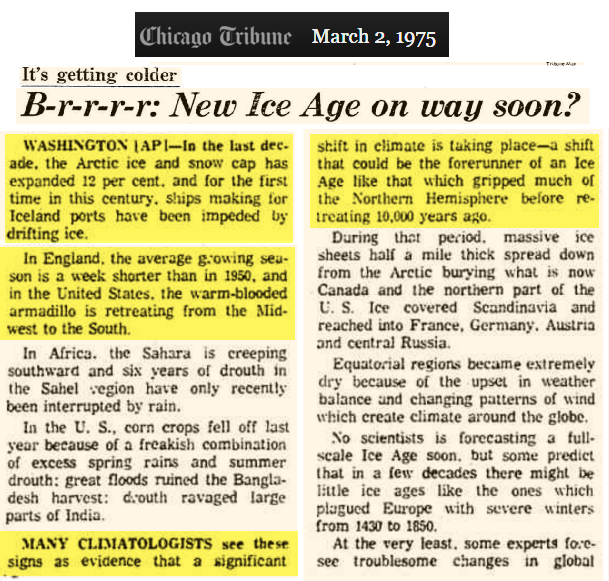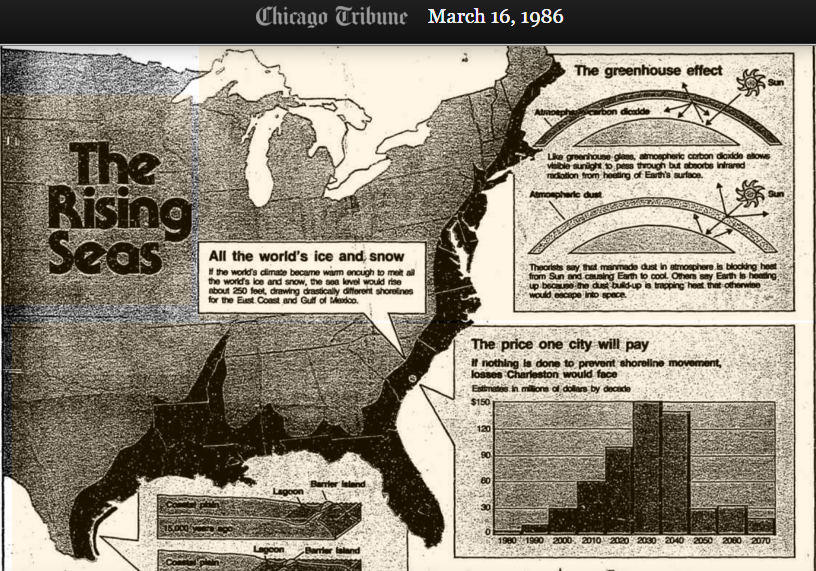Forty years ago, the Chicago Tribune predicted a new ice age.
Thirty years ago, The Chicago Tribune predicted that global warming would make the Earth drown.
Newspapers are always hoping their readers are idiots, and they do everything they can to make sure their readers remain idiots.




March 2, 1975 & the Trib is confirming that:
The current start of Arctic Sea ice is a high point. In the last decade, the Arctic ice and snow cap has expanded 12 per cent,
There was a ‘Little Ice Age’. No scientist is forecasting a full-scale Ice Age soon, but some predict that in a few decades there might be little ice ages like the ones which plagued Europe with severe winters from 1430 to 1850.
“Wilson Smith, you missed another one.”
“No scientist is forecasting a full-scale Ice Age soon….”
Well not quite.
The fall 2012 paper Can we predict the duration of an interglacial? agrees with Lisieck and Raymo …
An older paper from 2007 also agrees Lesson from the past: present insolation minimum holds potential for glacial inception
Can we predict the duration of an interglacial? (Forgot to link it, sorry)